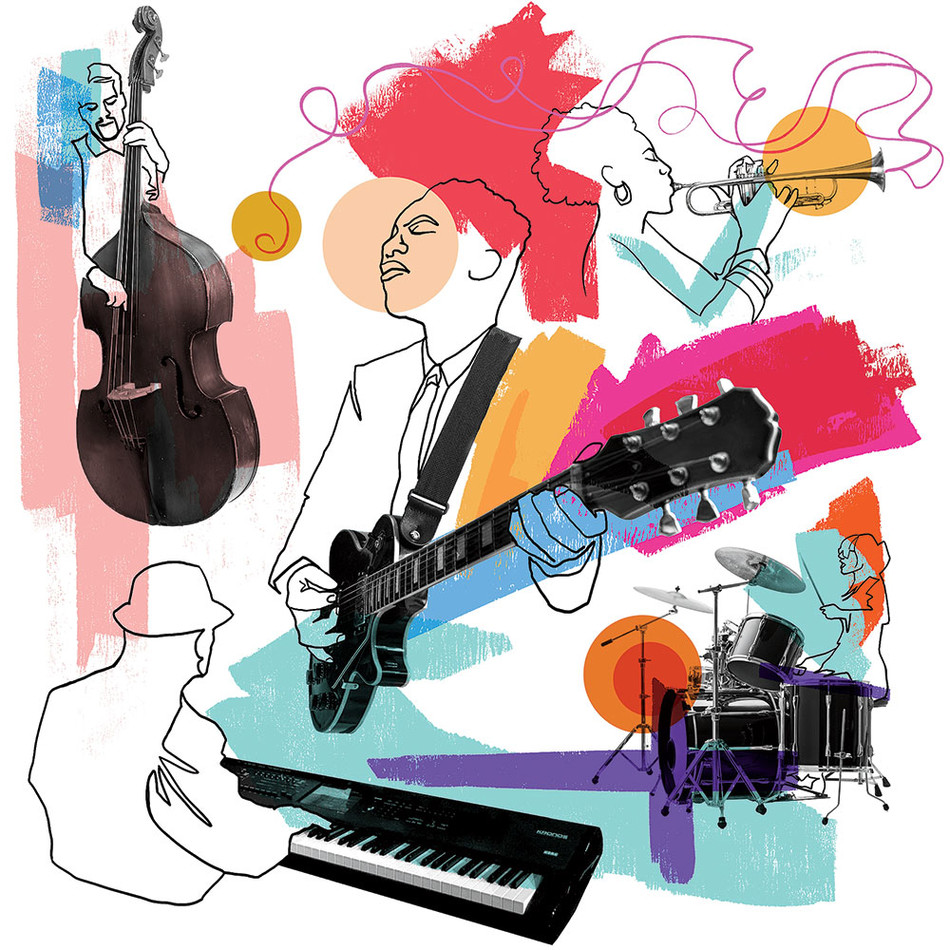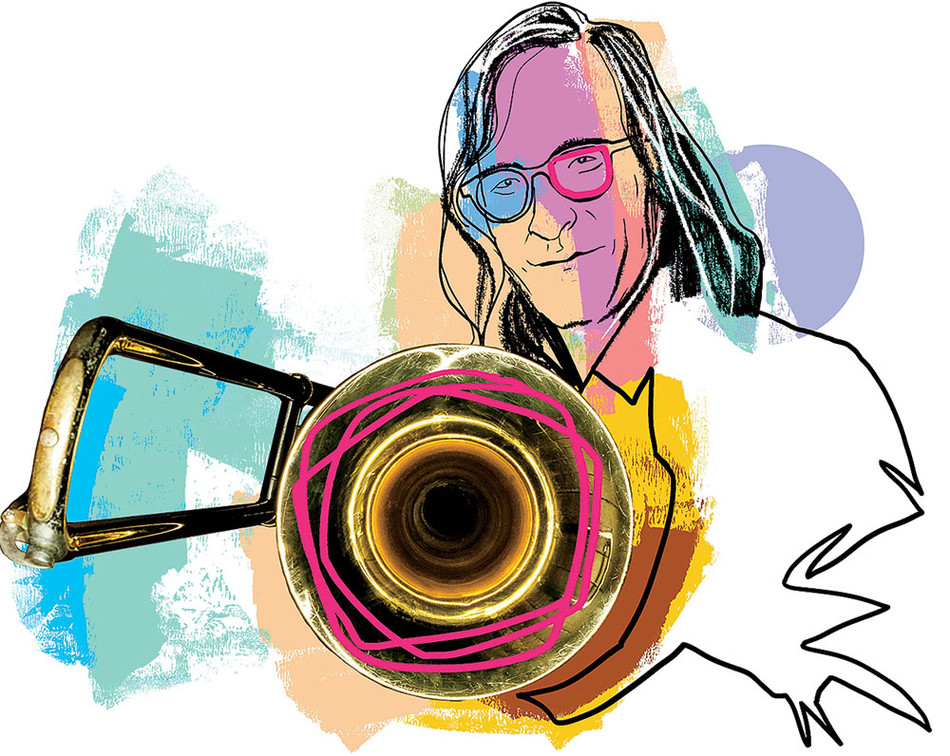The combo swung hard under the cool vault of St. Paul’s Chapel. It was 2002, and the musicians — students in the Jazz Performance Program — were warming up the crowd before a talk sponsored by Columbia’s Center for Jazz Studies.
Chris Washburne ’99GSAS, a young music professor who had founded the program the year before, listened appreciatively from the sidelines. When Columbia had offered him his job, he’d had one condition: that he be allowed to start a program that would give undergraduates an opportunity to explore jazz improvisation and composition for academic credit. He knew that among students of philosophy, literature, and engineering were talented trumpeters, pianists, and singers, and it only seemed right that a university abutting Harlem, the jazz hub of New York, should provide instruction in America’s premier art form.
Inside St. Paul’s, Washburne gave a signal and the band wrapped up. The audience applauded, and as the professor walked down the center aisle, an elderly woman in a black newsboy cap grabbed his arm. “Are those your students?” she said. “They’re fantastic.”
The woman was Phoebe Jacobs, executive vice president of the Louis Armstrong Educational Foundation and one-time publicist for the seminal musician. As executor of Armstrong’s estate, Jacobs, whose other clients included Ella Fitzgerald and Sarah Vaughan, was committed to funding jazz education and had helped establish Columbia’s Center for Jazz Studies in 1993. Now she offered the Armstrong Foundation’s support for Washburne’s year-old curriculum. In tribute, Washburne changed the name to the Louis Armstrong Jazz Performance Program (LAJPP).
Today the program has 130 students. Five percent are music majors.
“I wanted to create something that catered specifically to students who are intellectually engaged in the world and have many interests besides jazz,” says Washburne, a trombonist and composer who has played with acts as varied as the Duke Ellington Orchestra, Tito Puente ’99HON, Justin Timberlake, David Byrne, and Björk. “Most LAJPP students don’t necessarily want to become professional musicians but want to play jazz or develop their skills. I write a lot of letters of recommendation for people going on to law school and medical school.”
There are eighteen ensembles in the LAJPP, from small combos to a big band. In recent years, Washburne has seen fewer trumpeters and saxophonists and more pianists and guitarists. “Music programs in public high schools have been cut since the 1980s, resulting in a shortage of brass and woodwind players in the US,” he says. “We’re experiencing that, and every other jazz program is too.”
It wasn’t always thus. Growing up in the 1970s in Bath, Ohio, Washburne had no choice but to pick up an axe. “In fifth grade everybody was given an instrument,” he says. “I wanted to play trumpet, but I couldn’t get it to make a sound. I could make a sound with the trombone.”
Washburne studied music at the University of Wisconsin and got his master’s at New England Conservatory. Wanting to extend his studies of Latin music, particularly Brazilian forms, he entered Columbia’s PhD program in ethnomusicology in 1989 and discovered that Columbia, which at the time offered no jazz performance classes for credit, harbored many jazz musicians in the humanities and sciences. Once he became a professor, he dedicated himself to bringing this complex and highly individualistic music into the wider academic fold. In 2003, he lobbied successfully to incorporate jazz studies into the Core Curriculum, instituting Satch and Bird alongside Bach and Berlioz.
Today the LAJPP has fourteen part-time faculty members and offers classes in arranging, improvisation, and jazz history. Some students who majored in other fields have made careers in music, like pianist and singer Peter Cincotti, pianist Ben Rosenblum ’16CC, saxophonist Daro Behroozi ’12CC, accordionist Sam Reider ’11CC, and drummer Craig Weinrib ’10CC.
The Louis Armstrong Educational Foundation, funded during his lifetime by Armstrong and his wife, Lucille, supports two guest artists a year to give LAJPP master classes, a roster that has featured reed player Don Byron, saxophonist Jimmy Heath, and bassist Ron Carter. And recently Washburne established a similar series of alumni guest artists, including saxophonist Bobby Porcelli ’59CC and pianist Armen Donelian ’72CC.
Phoebe Jacobs, who died in 2012, left her papers to the University, and Washburne believes that her support for jazz at Columbia will continue to enrich students, regardless of their professional paths.
“Everything that jazz musicians do can translate into any field,” he says. “I’m talking about the notion of improvisation and being flexible, fluid, and adaptable — spontaneously. That is the fundamental human survival mechanism: spontaneous adaptability. It’s the reason we’re all alive.”
This article appears in the Fall 2021 print edition of Columbia Magazine with the title "West End Blues."




